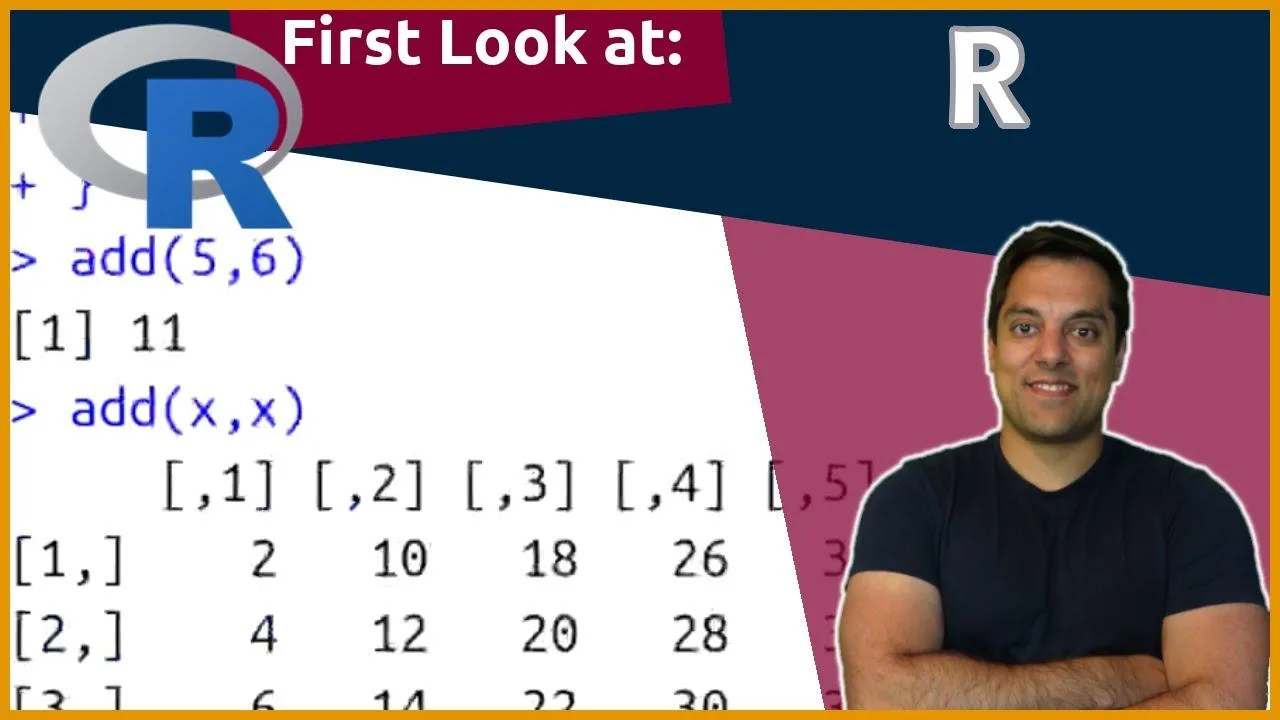R and Rstudio: A pirate’s treasure chest of programming languages. It’s the language for data analysis, statistics, and visualizations. R offers a unique approach to data analysis, making it a top choice for engineers and scientists. The R language is a stable and powerful tool for processing data, with great potential for statistical and graphing capabilities. Plus, it’s a lot of fun to use! 🏴☠️📊🔍
In this article, we will explore the programming language R and its integrated development environment, RStudio. We will dive into the use of R for data analysis, statistics, and visualizations, as well as its unique features and functionalities. From the initial impressions to examples and practical applications, we’ll take a comprehensive look at the programming language R and how it can be used effectively.
Table of Contents
ToggleFirst Impression of R and RStudio 🚀
Upon first glance, R appears to be a highly flexible language, incorporating different paradigms such as procedural, functional, imperative, and array programming. It is particularly renowned for its capabilities in handling various types of data, making it a popular choice among engineers and data scientists. The environment and package management system further enhance its accessibility and usability. R’s dynamic typing and statistical capabilities make it an intriguing tool for data analysis and visualization.
Key Takeaways 📊
- R is a top choice for engineers and data scientists due to its statistical and visualization capabilities.
- Its dynamic typing and comprehensive package management system make it highly accessible.
- R’s integrated environment provides a seamless experience for data analysis and visualization.
Getting Started with R and RStudio 📝
The first step in exploring R and RStudio involves installation and setup. The package management system allows for easy installation of base packages, providing a solid foundation for data analysis and visualization. The R language project, along with its compilation and compatibility with different operating systems, makes it an all-encompassing tool for statisticians and data analysts.
| Platforms Available | Package Managers |
|---|---|
| Unix and Mac | Compiles |
| Linux | Package Managers |
Exploring R’s Capabilities 🛠️
R offers an extensive range of functions and features that cater to the needs of statisticians, data analysts, and engineers. From matrix operations and statistical functions to graphical representations and data manipulations, R’s capabilities extend to various domains. The usage of special characters, operators, and functions makes R a versatile language for data analysis and visualization.
Useful Functions in R 📈
- Solving mathematical equations and operations
- Working with sequences and generating data
- Manipulating matrices and graphical representations
Integrated Development in RStudio 🖥️
RStudio provides a comprehensive environment for working with R, incorporating functions for data visualization, statistical analysis, and graphical representations. It offers an array of packages and libraries to aid in the development and visualization of data. Furthermore, RStudio supports the creation of presentations and integrates parallel programming.
Visualizations in RStudio 📊
- Generating 2D and 3D visual representations
- Utilizing statistical and mathematical functions for graphical output
- Developing presentations and integrating parallel programming
Conclusion ✨
The initial impressions of R and RStudio showcase the robust capabilities of the programming language for data analysis, statistics, and visualizations. Its dynamic typing, package management, and integrative environment make it a formidable tool for engineers and data scientists. With a focus on practical applications and examples, it becomes evident that R is a versatile language suitable for a wide range of statistical and graphical needs. For those venturing into the realm of data analysis, R presents itself as a compelling and powerful choice.
Key Takeaways 🥇
- R and RStudio provide an integrated and comprehensive environment for data analysis and visualization.
- The capabilities of R extend beyond statistical and mathematical functions, incorporating graphical representation and data manipulation.
- RStudio’s seamless integration with R further enhances its usability for engineers and data analysts.
Frequently Asked Questions ❓
Q: What makes R a top choice for data analysis?
A: R’s statistical capabilities, integrative environment, and dynamic typing make it highly appealing for data analysis and visualization.
Q: Is R suitable for beginners in data analysis?
A: R’s extensive range of functions and features, along with its user-friendly environment in RStudio, make it suitable for beginners and experienced data analysts alike.
Contributions and Collaborations 🌐
R’s growing community and the plethora of packages and libraries available make it an ideal platform for collaboration and contributions. From sharing knowledge and experiences to engaging in conversations and tutorials, the diverse range of individuals utilizing R contributes to its evolution and innovation.
Collaborative Platforms 🤝
- Developers Statistical Computing (DSC) platform
- Engaging in discussions and tutorials within the R community
Prepare to Dive into R Programming 🎯
As we conclude our exploration of R and RStudio, we extend an invitation to consider the vast opportunities and capabilities that R offers for data analysis and visualization. Whether you’re a seasoned data analyst or an aspiring engineer, R provides the tools and functions essential for navigating the realm of statistical and graphical representation. Embrace the dynamic nature of R and discover the endless possibilities it brings to the table.
Related posts:
- Sam Altman recently shared additional information about GPT-5 and AGI.
- Build Your Own GPT & E-commerce Chatbot with Ryan Baggott: A Step-by-Step Guide
- AI Coding: Debunking Myths and Exploring Realities
- Learn how to master data cleaning in Excel for data analytics with Simplilearn. #Dataanalytics #Excel
- Mistral Next: How did it fare in the coding test?
- What’s better than ChatGPT? We thoroughly explain Perplexity AI for an easy understanding.






